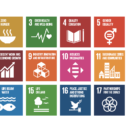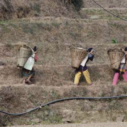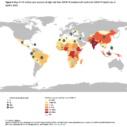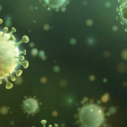
Search
Articles

The Sustainable Development Goals, COVID-19, and the Multidimensional Poverty Response
The 2030 Agenda for sustainable development is one of the broadest agreements that countries have proposed in recent decades. The agenda encompasses goals associated with inequality, violence, the environment, and deaths caused by noncommunicable diseases, among other topics of great importance to global development. It also seeks to meet goals to guarantee access to clean water sources, adequate sanitation, electricity and the internet. For the first time, a global agreement was proposed to reduce poverty in all of its dimensions, thus providing an opportunity to employ a multidimensional perspective in the measurement and analysis of the situation of people experiencing poverty.

The Multidimensional Poverty Peer Network (MPPN): A Space for Innovation in the Face of COVID-19
Good ideas rarely spring from the minds of those who have had little contact with others.
The symbolic apple that fell from the tree in front of Newton, sparking his idea of universal gravity, is really just a symbol of an exceptional mind. In order for his ideas to develop, Newton read, discussed, and exchanged ideas with others.

Editorial – Dimensions 9
Analysing multidimensional poverty is all the more relevant in the complex context in which we are currently living due to the COVID-19 pandemic. As Maya Evans and Fanni Kovesdi point out in the first article of this issue, this new coronavirus will affect the poorest of the poor most dramatically. We join the authors in inviting you to share ideas and projects to address this new scenario. Also in this issue, a group of researchers, led by Sabina Alkire, show us where those most vulnerable to the pandemic are and how the MPI can help deliver a more targeted response.

Multidimensional Poverty and the Risk from COVID-19
As of April, the COVID-19 pandemic (1) is just be- ginning to spread to developing regions, and ad hoc emergency responses are currently being developed and applied in rapid fashion. These often involve targeted food or cash programmes directed at the poorest and those who are most vulnerable. However, a major obstacle faced by many governments at the moment is how to identify the poorest. One way of doing so is to apply the global Multidimensional Poverty Index (MPI) – which both makes good use of available data and is a well-established concept of poverty.

The Threat Posed by COVID-19 to People Living in Poverty
Governments and the development community are attempting to respond to the evolving threat of the COVID-19 pandemic. The impact on multidimensional poverty levels around the world is likely to be severe, with the poorest hit hardest.
COVID-19 has the potential to drag people just above the poverty threshold into poverty due to its effect on the global economy, with many countries halting production and shutting down whole sectors of their economies. The virus is providing another sobering example of the stark inequalities in society – both in monetary and multidimensional terms – and exacerbating those inequalities at a speed that few could have predicted.












